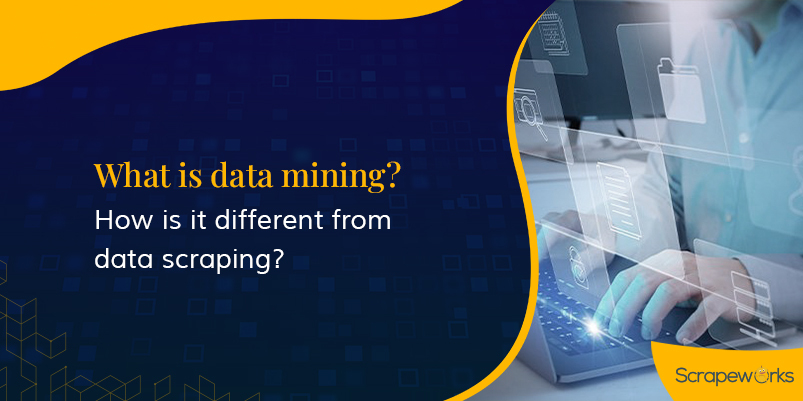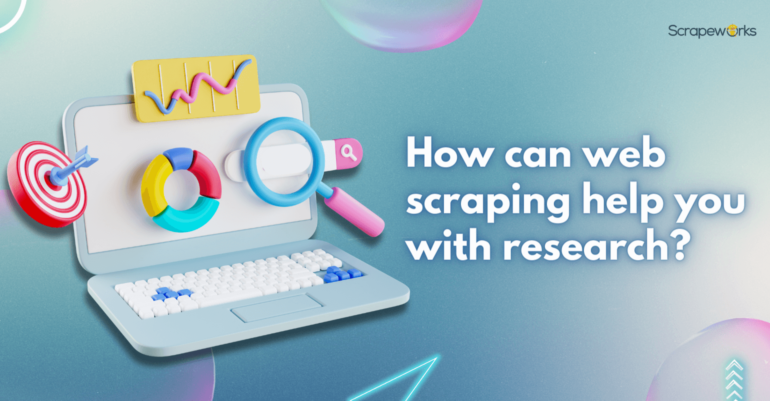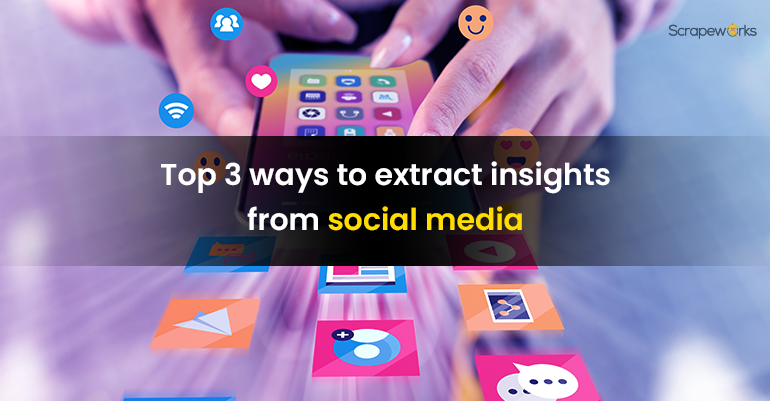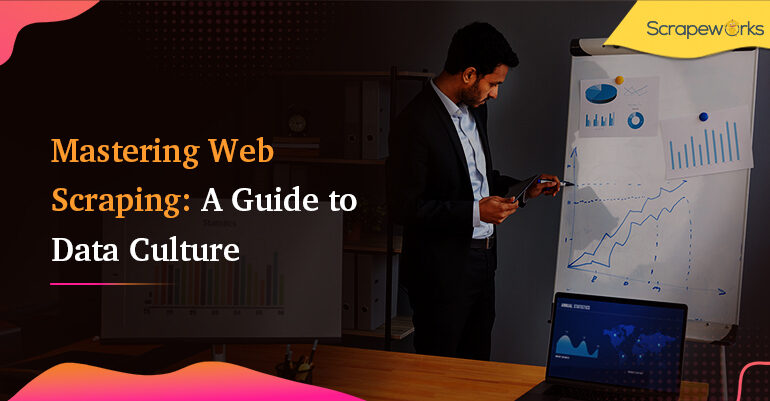Data scraping and data mining is often used synonymously in the tech world. But these two terms are coined for two different data processes with two different outcomes. They have a number of features and use cases in common, they are fundamentally distinct. Data mining is often interpreted as the process of collecting data for analytics but its scope goes beyond that.
What is data scraping?
Data scraping or data extraction is a technique for extracting data from websites, databases, and corporate internal sources automatically. Using scraping, a user can update their database with the most updated and recent data without manual support. It also helps organizations without any solid IT infrastructure to fetch the data in an affordable manner. It is usually the initial step in the whole data handling process.
Data scraping tools won’t derive any insights or patterns from the data it collects, so the scope is limited to data collection alone. Data scraping is typically used for reprocessing, whereas data mining is primarily concerned with extracting value from data. Data scraping is traditionally done by hand, which is a time-consuming and arduous operation. Modern techniques leverage technological tools because of their speed and convenience.
What is data mining?
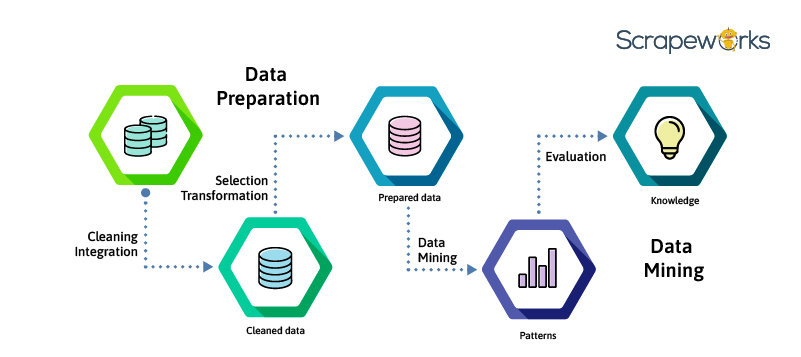
Data mining technology is like gold mining, it removes all the impurities and gives the final result, that is gold, in this case insights. It is a part of data analytics as it processes vast volumes of data and identifies patterns in that data to derive relevant conclusions. Advanced data mining is being used by FMCGs, banks and insurance companies, telecommunications providers, and healthcare providers to discover relationships between data to do price optimization, marketing, and product development. Data mining accelerates the speed of making data-driven decisions and enhances the credibility of those decisions using accurate insights.
How does data mining work?
1. Identify the business objective
Before processing the data, it’s important to identify and define a business objective for which data mining technology is being used. Once an objective is identified, the whole data process takes place to provide insights to achieve those business objectives. Data analysts and relevant stakeholders must establish the business challenge, and data queries for a productive utilization of data mining. For example, If an FMCG company is planning to batch manufacture for next year and they want to identify the most ideal number of products for gaining maximum traffic, it can identify patterns between past and current data to identify optimal production.
2. Data preparation
After identifying the objective, the data process begins with preparing the data for mining. In data preparation for analytics, the first step is data cleansing. Large volumes of unstructured data may include unwanted and outdated data. Organizations clean the unstructured data to eliminate redundant and outdated information. Based on the business objective, data scientists eliminate all the unwanted data and carefully select the datasets that can contribute to the objective.
After data cleansing, the next step is data integration. After they cleanse the data, they gather all the data at a central repository for a unified view. This process ensures easy accessibility of valid data across the organization for informed decision making. Once they integrate all the data, the next stage is data transformation. At this stage, data scientists transform all the data into one single, convenient format for future use.
3. Pattern recognition
The classification of data based on prior knowledge or statistical information is known as pattern recognition.The goal of this stage is to find possibly helpful connections and patterns that will help to validate hypotheses. Data scientists may look at any intriguing data relationships, such as sequential patterns and association rules depending on the business need. They use intelligent methods such as artificial intelligence and machine learning to identify patterns from vast volumes of data.
4. Knowledge sharing
Once a pattern is identified, the conclusions need to be analyzed and interpreted for deriving insights that can support decision making. Once we derive the insights, the next step is to present this data in the most appropriate and easy to understand manner. Data visualization process enables useful representation of insights in the form of graphs and charts for better understanding. Once these insights are visualized and delivered, organizations can proceed with the objective without any additional support.
Data mining Vs Data scraping
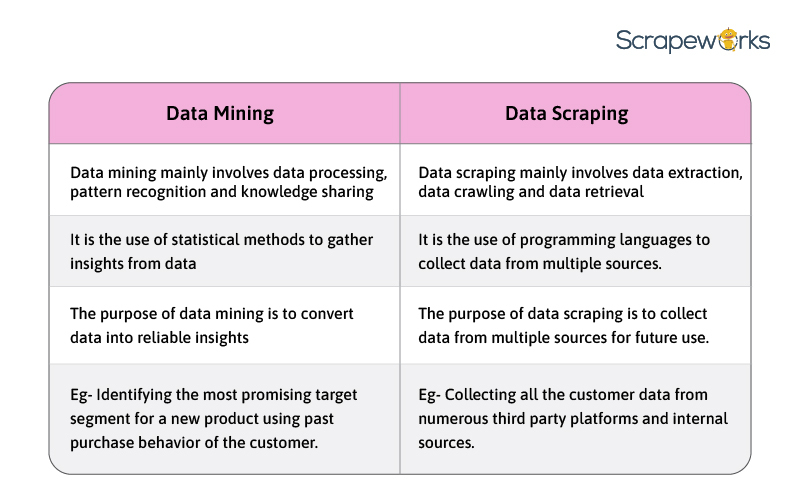
Despite the fact that data scraping and data mining are two distinct words, they occur simultaneously. For greater insights, the mining process needs precise and real-time data, which scraping can provide. It leverages particular algorithms to uncover hidden relationships and correlations in these databases. Data scraping and mining assist businesses all around the world make better business decisions and steer their operations in the right direction.
At Scrapeworks, we scrape and deliver relevant data in real-time for your data analytics needs. We make the foundation for data analytics strong with our updated and accurate datasets. Our automated web scraping process ensures high quality data at an affordable price. Connect with us to integrate data scraping tools into your business.


